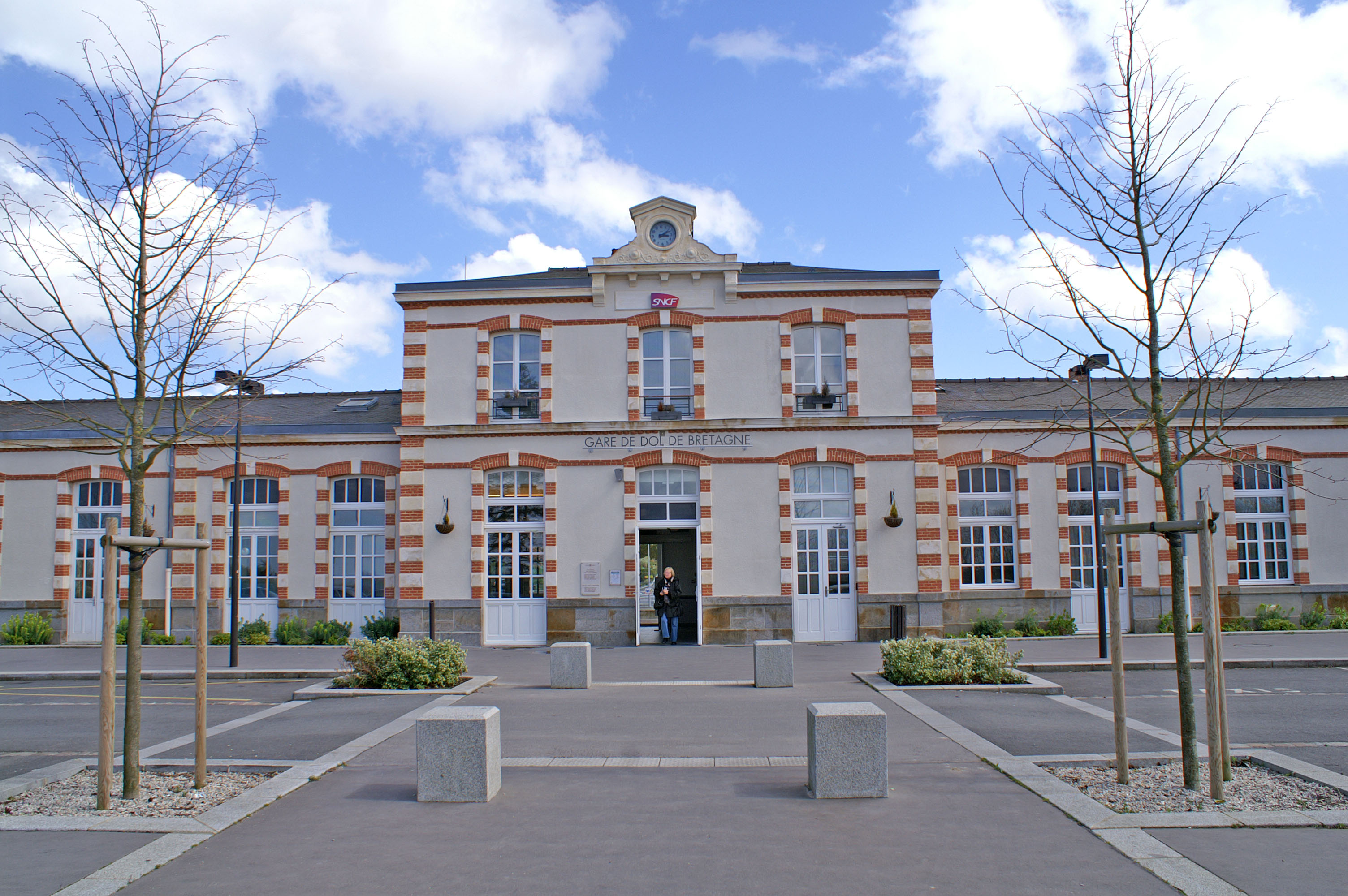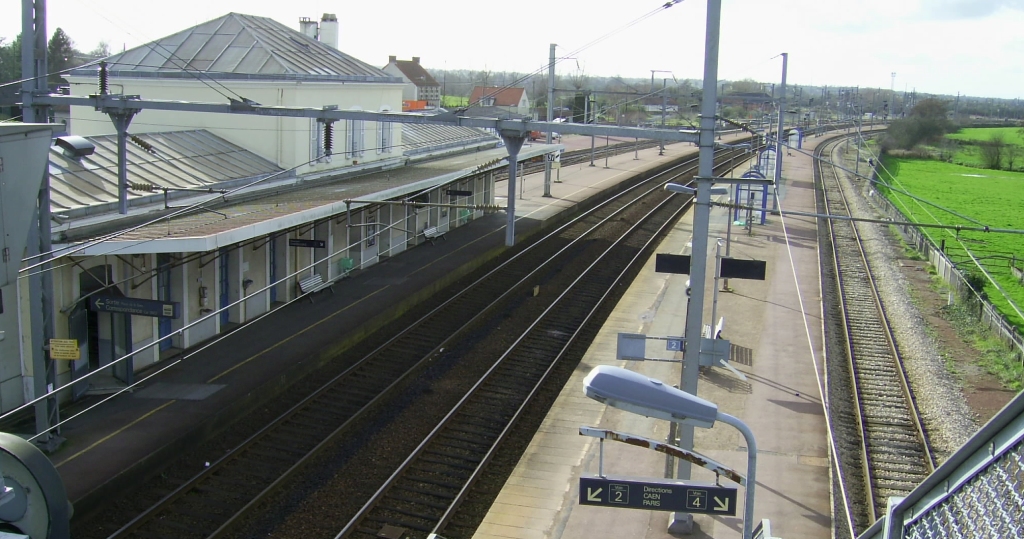|
Lison–Lamballe Railway
The Lison–Lamballe railway is an important 205.7-kilometre long railway line that runs between the French commune of Lison and the town of Lamballe. It is used for passenger (express, regional and suburban) and freight traffic. The railway was opened in several stages between 1860 and 1879. Main stations * Lison station * Saint-Lô station * Folligny station * Dol-de-Bretagne station * Dinan station * Lamballe station Lamballe station ( French: ''Gare de Lamballe'') is a railway station serving the town Lamballe, Côtes-d'Armor department, western France. It is situated on the Paris–Brest railway and the branch line to Dinan and Dol-de-Bretagne. Services Th ... Line history The line was opened in several stages between 1860 and 1879. References Railway lines in Normandy Railway lines in Brittany Railway lines opened in 1860 {{France-rail-transport-stub ... [...More Info...] [...Related Items...] OR: [Wikipedia] [Google] [Baidu] |
SNCF
The Société nationale des chemins de fer français (; abbreviated as SNCF ; French for "National society of French railroads") is France's national state-owned railway company. Founded in 1938, it operates the country's national rail traffic along with Monaco, including the TGV, on France's high-speed rail network. Its functions include operation of railway services for passengers and freight (through its subsidiaries SNCF Voyageurs and Rail Logistics Europe), as well as maintenance and signalling of rail infrastructure (SNCF Réseau). The railway network consists of about of route, of which are high-speed lines and electrified. About 14,000 trains are operated daily. In 2010 the SNCF was ranked 22nd in France and 214th globally on the Fortune Global 500 list. It is the main business of the SNCF Group, which in 2020 had €30 billion of sales in 120 countries. The SNCF Group employs more than 275,000 employees in France and around the world. Since July 2013, the SNCF Grou ... [...More Info...] [...Related Items...] OR: [Wikipedia] [Google] [Baidu] |
Communes Of France
The () is a level of administrative division in the French Republic. French are analogous to civil townships and incorporated municipalities in the United States and Canada, ' in Germany, ' in Italy, or ' in Spain. The United Kingdom's equivalent are civil parishes, although some areas, particularly urban areas, are unparished. are based on historical geographic communities or villages and are vested with significant powers to manage the populations and land of the geographic area covered. The are the fourth-level administrative divisions of France. vary widely in size and area, from large sprawling cities with millions of inhabitants like Paris, to small hamlets with only a handful of inhabitants. typically are based on pre-existing villages and facilitate local governance. All have names, but not all named geographic areas or groups of people residing together are ( or ), the difference residing in the lack of administrative powers. Except for the municipal arrondi ... [...More Info...] [...Related Items...] OR: [Wikipedia] [Google] [Baidu] |
Railway Lines In Normandy
Rail transport (also known as train transport) is a means of transport that transfers passengers and goods on wheeled vehicles running on rails, which are incorporated in tracks. In contrast to road transport, where the vehicles run on a prepared flat surface, rail vehicles (rolling stock) are directionally guided by the tracks on which they run. Tracks usually consist of steel rails, installed on sleepers (ties) set in ballast, on which the rolling stock, usually fitted with metal wheels, moves. Other variations are also possible, such as "slab track", in which the rails are fastened to a concrete foundation resting on a prepared subsurface. Rolling stock in a rail transport system generally encounters lower frictional resistance than rubber-tyred road vehicles, so passenger and freight cars (carriages and wagons) can be coupled into longer trains. The operation is carried out by a railway company, providing transport between train stations or freight customer facili ... [...More Info...] [...Related Items...] OR: [Wikipedia] [Google] [Baidu] |
Lamballe Station
Lamballe station ( French: ''Gare de Lamballe'') is a railway station serving the town Lamballe, Côtes-d'Armor department, western France. It is situated on the Paris–Brest railway and the branch line to Dinan and Dol-de-Bretagne. Services The station is served by high speed trains to Brest, Rennes and Paris, and regional trains to Brest, Saint-Brieuc, Dol-de-Bretagne and Rennes.Le réseau de transport de la Région Bretagne TER Bretagne, accessed 26 April 2022. See also *List of SNCF stations in Brittany
This article contains a list of current SNCF railway sta ...
[...More Info...] [...Related Items...] OR: [Wikipedia] [Google] [Baidu] |
Dinan Station
The Gare de Dinan (Dinan Station) is a French railway station on the Lison to Lamballe line, in the town of Dinan, Côtes-d'Armor, Brittany. It has included a railway museum since 1991. The station was opened in 1879 by the Western Railways Company. It is now a station of the Société nationale des chemins de fer français (SNCF), served by trains operated by TER Bretagne. Network location The station is at an altitude of . It is at kilometer point (KP) 169.940 of the Lison to Lamballe line, between the Hisse and Corseul stations. It was at the start of lines to Saint-Énogat and La Brohinière, both of which were closed in the 1990s. History The single-track section from Dol-de-Bretagne to Lamballe, on which is Dinan is located, was commissioned on 29 December 1879 by the Western Railway Company. The present station dates from 1931, and was designed by Georges-Robert Lefort. It was part of the construction program launched by Raoul Dautry, general manager of the state rai ... [...More Info...] [...Related Items...] OR: [Wikipedia] [Google] [Baidu] |
Dol-de-Bretagne Station
Gare de Dol-de-Bretagne is a railway station serving the town Dol-de-Bretagne, Ille-et-Vilaine department, western France. The station is situated on the Rennes–Saint-Malo and the Lison–Lamballe railways. Services The station is served by high speed trains to Rennes and Paris, and regional trains to Saint-Malo, Saint-Brieuc, Granville and Rennes Rennes (; br, Roazhon ; Gallo: ''Resnn''; ) is a city in the east of Brittany in northwestern France at the confluence of the Ille and the Vilaine. Rennes is the prefecture of the region of Brittany, as well as the Ille-et-Vilaine department ....Le réseau de transport de la Région Bretagne TER Bretagne, accessed 26 April 2022. [...More Info...] [...Related Items...] OR: [Wikipedia] [Google] [Baidu] |
Folligny Station
Folligny station (French: ''Gare de Folligny'') is a railway station serving the town Folligny, Manche department, northwestern France. It is situated on the Lison–Lamballe railway. Services The station is served by regional trains to Granville, Argentan, Caen, Paris and Rennes Rennes (; br, Roazhon ; Gallo: ''Resnn''; ) is a city in the east of Brittany in northwestern France at the confluence of the Ille and the Vilaine. Rennes is the prefecture of the region of Brittany, as well as the Ille-et-Vilaine department .... TER Normandie, accessed 14 April 2022. References Railway stations in Manche[...More Info...] [...Related Items...] OR: [Wikipedia] [Google] [Baidu] |
Saint-Lô Station
Gare de Saint-Lô is a railway station serving the town Saint-Lô, Manche department, Normandy, northwestern France. It is situated on the Lison–Lamballe railway. On the Railplanner app (EUrail) the station is listed as St-Lô (France). World War II bombardment During the Normandy Campaign, Allied bombing in the Battle of Saint-Lô The Battle of Saint-Lô is one of the three conflicts in the , which took place between July 7 and 19, 1944, just before Operation Cobra. Saint-Lô had fallen to Germany in 1940, and, after the Invasion of Normandy, the Americans targeted the c ... focused on the railroad station for its strategic importance. Services The station is served by local trains between Caen and Granville. TER Normandie, accessed 10 May 2022. References E ...
|
Lison Station
Gare de Lison is a railway station serving the town of Lison, Calvados department, northwestern France. It is situated at the junction of the Mantes-la-Jolie–Cherbourg railway and the Lison–Lamballe railway. The station is served by regional trains to Cherbourg, Caen, Paris and Granville. Several bus routes also serve this station to connect passengers to nearby towns such as Bayeux, Carentan and Le Molay-Littry. The station has ticket machines for customers to buy tickets before their journey as well as an automated car parking system for those travelling by car. The station building has been designed in the traditional French style with arched windows and stone walls which give it an attractive look from the outside. Inside there are several shops and cafes offering refreshments for passengers on their journeys. There is also a waiting area with comfortable seating and free Wi-Fi access for travelers during their wait times. In 2018, Gare de Lison was rated one of the cl ... [...More Info...] [...Related Items...] OR: [Wikipedia] [Google] [Baidu] |
Railway
Rail transport (also known as train transport) is a means of transport that transfers passengers and goods on wheeled vehicles running on rails, which are incorporated in tracks. In contrast to road transport, where the vehicles run on a prepared flat surface, rail vehicles (rolling stock) are directionally guided by the tracks on which they run. Tracks usually consist of steel rails, installed on sleepers (ties) set in ballast, on which the rolling stock, usually fitted with metal wheels, moves. Other variations are also possible, such as "slab track", in which the rails are fastened to a concrete foundation resting on a prepared subsurface. Rolling stock in a rail transport system generally encounters lower frictional resistance than rubber-tyred road vehicles, so passenger and freight cars (carriages and wagons) can be coupled into longer trains. The operation is carried out by a railway company, providing transport between train stations or freight customer facilit ... [...More Info...] [...Related Items...] OR: [Wikipedia] [Google] [Baidu] |
Normandy
Normandy (; french: link=no, Normandie ; nrf, Normaundie, Nouormandie ; from Old French , plural of ''Normant'', originally from the word for "northman" in several Scandinavian languages) is a geographical and cultural region in Northwestern Europe, roughly coextensive with the historical Duchy of Normandy. Normandy comprises mainland Normandy (a part of France) and the Channel Islands (mostly the British Crown Dependencies). It covers . Its population is 3,499,280. The inhabitants of Normandy are known as Normans, and the region is the historic homeland of the Norman language. Large settlements include Rouen, Caen, Le Havre and Cherbourg. The cultural region of Normandy is roughly similar to the historical Duchy of Normandy, which includes small areas now part of the departments of Mayenne and Sarthe. The Channel Islands (French: ''Îles Anglo-Normandes'') are also historically part of Normandy; they cover and comprise two bailiwicks: Guernsey and Jersey, which are B ... [...More Info...] [...Related Items...] OR: [Wikipedia] [Google] [Baidu] |
25 KV AC
Railway electrification systems using alternating current (AC) at are used worldwide, especially for high-speed rail. It is usually supplied at the standard utility frequency (typically 50 or 60Hz), which simplifies traction substations. The development of 25kV AC electrification is closely connected with that of successfully using utility frequency. This electrification is ideal for railways that cover long distances or carry heavy traffic. After some experimentation before World War II in Hungary and in the Black Forest in Germany, it came into widespread use in the 1950s. One of the reasons why it was not introduced earlier was the lack of suitable small and lightweight control and rectification equipment before the development of solid-state rectifiers and related technology. Another reason was the increased clearance distances required where it ran under bridges and in tunnels, which would have required major civil engineering in order to provide the increased clearanc ... [...More Info...] [...Related Items...] OR: [Wikipedia] [Google] [Baidu] |






